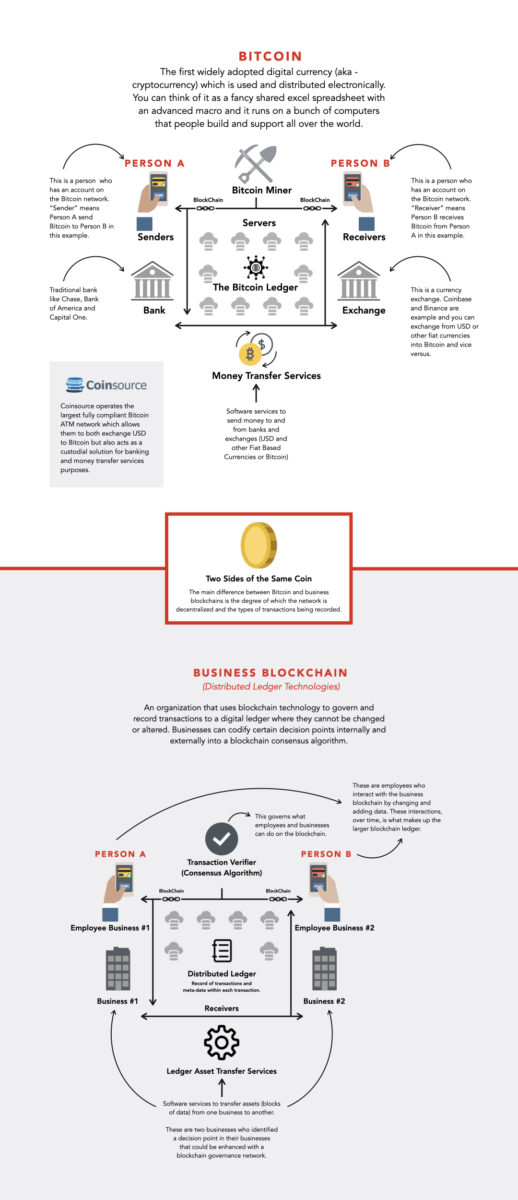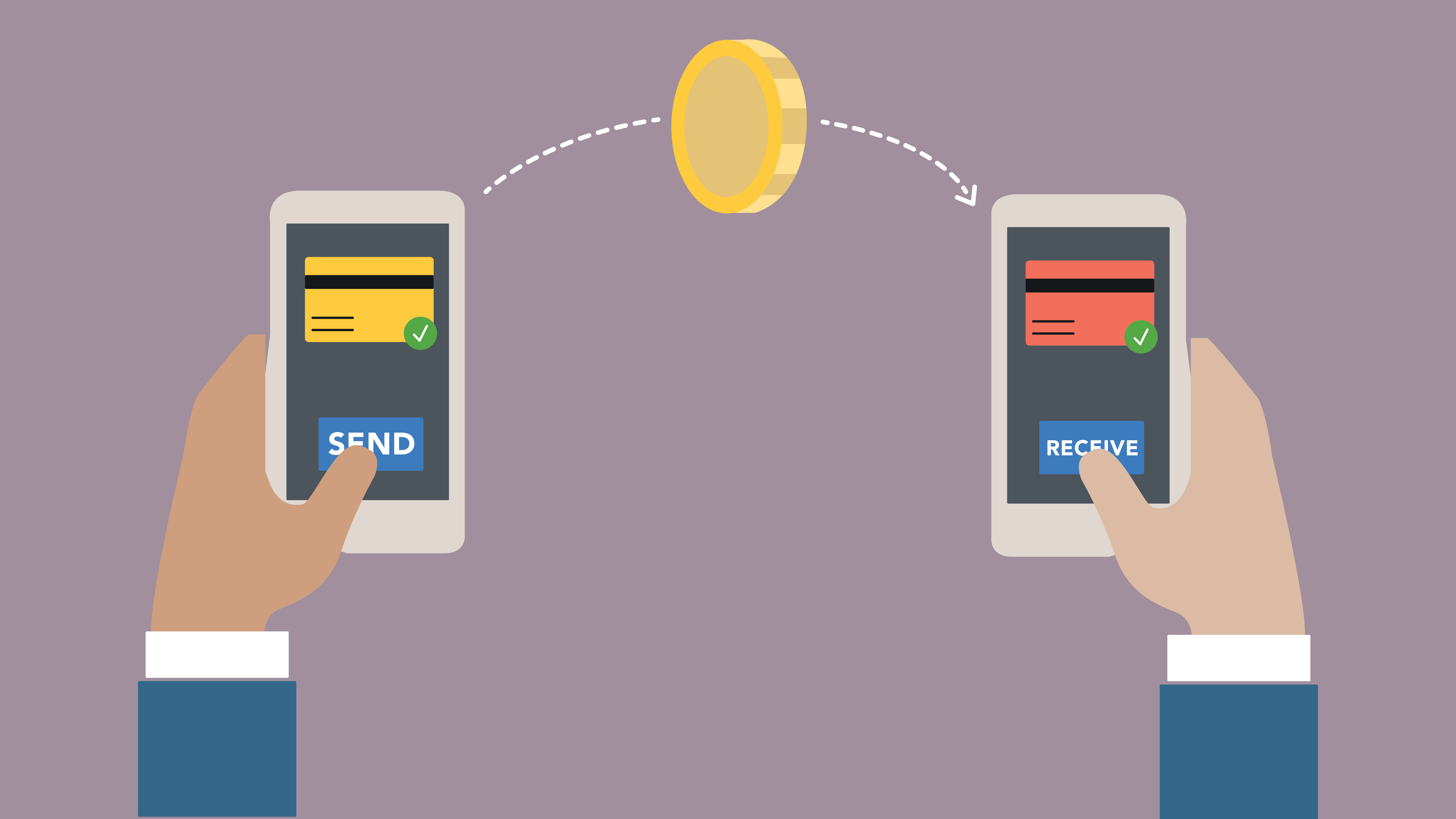Published by
What are cryptocurrencies like Bitcoin and Litecoin and what is the difference between cryptocurrencies and blockchain networks that businesses are developing you read about in the news? As a product manager, how do you know when there is an opportunity to leverage these technologies to drive growth within your customer or employee experience and how do you make that come to life? These are two important questions we often get asked at Bottle Rocket and so we decided to provide our current best answer for anyone who is interested in reading.
Before you can start thinking about ways to incorporate blockchain and cryptocurrencies into your experience, you need to understand the puzzle that is Blockchain and cryptocurrencies and how they are supposed to fit together.
This hurdle is often underestimated and its difficulty doesn’t have anything to do with you or your IQ and has everything to do with the fact you can’t see what is going on inside of a blockchain network and that it was created without the touch of a design team to create the visibility, clarity and ease of use that is required for high adoption rates.
So, what does this puzzle look like? We sat down with the Bottle Rocket Design team to paint this picture in the clearest way possible.

The main difference between Bitcoin and business blockchains is the degree of which the network is decentralized (how much human interaction exists within the network), and the types of transactions being recorded. Bitcoin is a fully decentralized network which means that there is no human interaction when sending Bitcoin from one person to another. Most business blockchains are not fully decentralized and require some human interaction to complete the transaction such as a manual review of a voting ballet before being confirmed to the ledger for example.
“Blockchain can mean different things to different types of companies. For big companies it is about making existing markets more efficient & transparent. For small & medium sized companies collaboration enables them to punch above their weight and launch exciting new last mile like products and services. But it is at the start up level that digital innovation burns the brightest creating the new digital economy to transform whole industries on top of this new quality and ownership / access of data.” – Andy Martin, Blockchain Business Value Design World Wide Leader – IBM
The Relationship Between Blockchain, Cryptocurrencies & Your Customer or Employee Experience
The more obvious place to start here is with Bitcoin and cryptocurrencies. Their utility as an alternative payment option is better understood and its home in your experience is most likely already in place. It’s more a question of whether it makes good business sense to offer Bitcoin or some other cryptocurrency as a payment option. Customers typically prefer choice and any customer who uses this channel could result in the avoidance of credit card transaction fees by the business, driving higher profit margins.
Turning to the other side of the same coin and the relationship isn’t as intuitively obvious. Most of this stems from the fact that these are business focused networks that don’t get much visibility by the public. The experience in this instance is typically a web or mobile app used by your employees. This employee experience is a window into the blockchain and its available functions. The quality and ease-of-use of this employee experience will be the main driver of adoption.
The relationship between your customers/employees and blockchain/cryptocurrencies will be largely derived by the design and the user experience of the web and/or mobile application used to interact with it. If you want to drive adoption using blockchain and cryptocurrencies, make the experience so easy to use, it is intuitively understood by even the most casual observer. A bad design and user experience are the barriers that has prevented adoption growth of Bitcoin and other cryptocurrencies the most. It simply isn’t easy to use for most people and thus does not get used as much as it could be.
Here are a few examples of business blockchains that might help readers understand these business blockchain networks better and what its relationship is to an existing business.
- Sweatcoin – https://sweatco.in (STARTUP)
- South Korea City of Seoul – https://cointelegraph.com/news/seoul-to-implement-blockchain-in-citizen-cards-the-mayor-reveals (ENTERPRISE)
- US Post Office – https://www.forbes.com/sites/vipinbharathan/2020/09/20/us-postal-service-files-a-patent-for–voting-system-combining-mail-and-a-blockchain/#1f2bafe13336 (ENTERPRISE)
When to Leverage Blockchain and Cryptocurrencies to Drive Experience Growth
Whether or not it makes sense to invest in blockchain and / or cryptocurrencies to drive growth depends largely on the benefits that would be gained from automated decision and governance processes and the level of interest from your current and future customer/employee base. Below are three common areas to consider when evaluating your customer or employee experience for opportunities to drive growth through blockchain and cryptocurrencies.
- Cross B2B silo collaboration (reconciliation, provenance or a visibility issue) (Source – Andy Martin, IBM)
- Data that needs to be shared is too valuable to let a 3rd party govern on your behalf (Source – Andy Martin, IBM)
- Customer interest supports additional payment option(s)
As a product manager, it is important to consistently take the pulse of the businesses decision and governance model taking place inside your business right now. An easy way to do this is to simply write down every decision made internally and externally with 3rd parties. Once this list has been made, evaluate each decision using a multidimensional lens that includes the amount of time to complete each decision and the amount of pain it causes (none, low, medium, high).
Once this is complete, filter the list so that the decisions with the highest level of pain and that take the most time to complete on average are on top and proceed in descending order down the list. These are the areas that represent your best opportunities to drive growth through blockchain and cryptocurrencies.
How to Incorporate Blockchain and/or Cryptocurrencies into Your Customer and/or Employee Experience
If you are a product owner overseeing a customer or employee experience, how do you find areas to incorporate blockchain and cryptocurrencies in your product experience? What does a tactical list of steps look like to cross the Bitcoin and cryptocurrency chasm?
How to incorporate blockchain into your business:
- Document and analyze current governance model (all decisions made internally and externally with other businesses)
- Prioritize decisions based upon the amount of time it currently takes to complete and current level of pain experienced while completing it
- Decide if any decisions warrant a blockchain solution through a simple cost benefit analysis
- Create a business and product strategy
- Create technology delivery blueprint
- Develop and launch
- Codify more and scale the network out to see efficiencies from economies of scale
How to incorporate Bitcoin and / or other cryptocurrencies into your customer experience:
- Perform market and user research to determine economic viability and level of interest
- Select cryptocurrencies to incorporate based upon level of interest (https://coinmarketcap.com)
- Create a business and product strategy
- Create technology delivery blueprint
- Develop and launch
- Learn, iterate, improve
In summary, blockchain and cryptocurrencies are computer networks that govern and record transactions from human or machine interactions such as sending money from one person to another or recording the votes for an upcoming election by mail ballot. Whether or not it makes sense to invest and incorporate this technology depends largely on the business blockchain cost/benefit analysis and the level of interest from your current and future customer base on the use of cryptocurrencies. Product managers and product growth SME’s should keep a consistent pulse on their governance models and perform regular reviews to determine when it makes sense to leverage this technology.
Share:
Categories
tags
Related Posts


The Great Big Budget Cut: Prioritization


